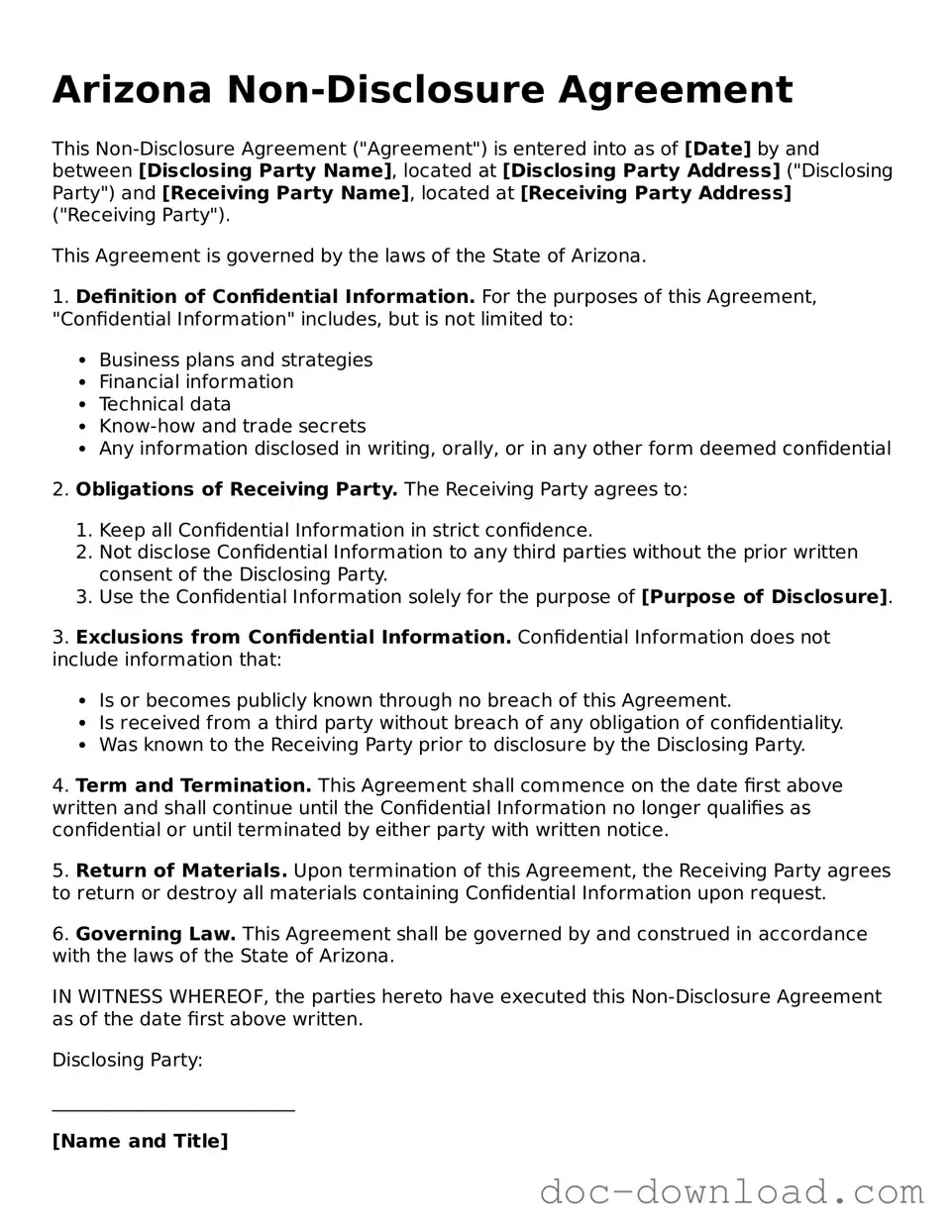Arizona Non-Disclosure Agreement
This Non-Disclosure Agreement ("Agreement") is entered into as of [Date] by and between [Disclosing Party Name], located at [Disclosing Party Address] ("Disclosing Party") and [Receiving Party Name], located at [Receiving Party Address] ("Receiving Party").
This Agreement is governed by the laws of the State of Arizona.
1. Definition of Confidential Information. For the purposes of this Agreement, "Confidential Information" includes, but is not limited to:
- Business plans and strategies
- Financial information
- Technical data
- Know-how and trade secrets
- Any information disclosed in writing, orally, or in any other form deemed confidential
2. Obligations of Receiving Party. The Receiving Party agrees to:
- Keep all Confidential Information in strict confidence.
- Not disclose Confidential Information to any third parties without the prior written consent of the Disclosing Party.
- Use the Confidential Information solely for the purpose of [Purpose of Disclosure].
3. Exclusions from Confidential Information. Confidential Information does not include information that:
- Is or becomes publicly known through no breach of this Agreement.
- Is received from a third party without breach of any obligation of confidentiality.
- Was known to the Receiving Party prior to disclosure by the Disclosing Party.
4. Term and Termination. This Agreement shall commence on the date first above written and shall continue until the Confidential Information no longer qualifies as confidential or until terminated by either party with written notice.
5. Return of Materials. Upon termination of this Agreement, the Receiving Party agrees to return or destroy all materials containing Confidential Information upon request.
6. Governing Law. This Agreement shall be governed by and construed in accordance with the laws of the State of Arizona.
IN WITNESS WHEREOF, the parties hereto have executed this Non-Disclosure Agreement as of the date first above written.
Disclosing Party:
__________________________
[Name and Title]
Receiving Party:
__________________________
[Name and Title]
